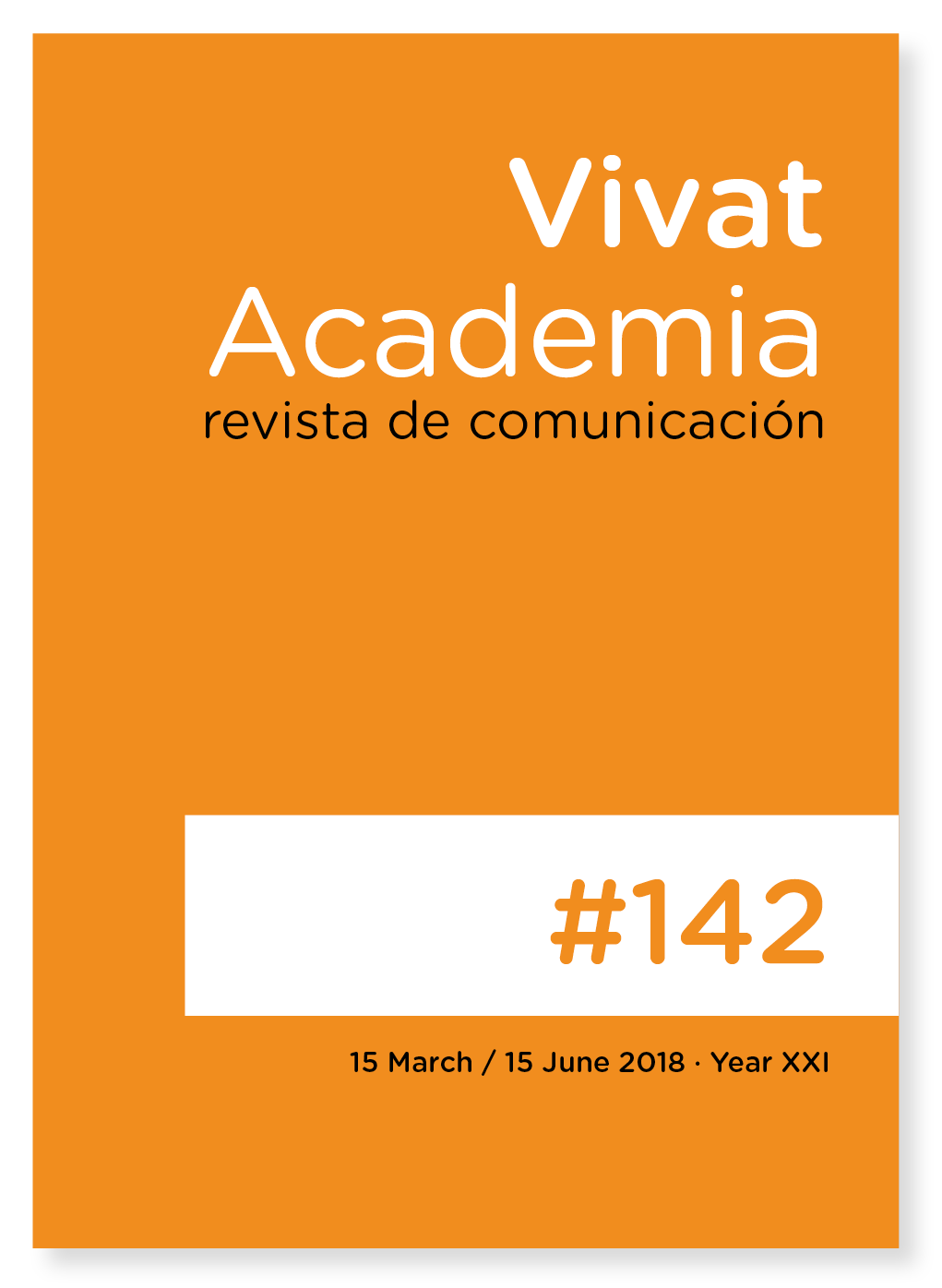The personal is political: a baby in the session of constitution of the general courts. The television treatment of the case of Carolina Bescansa and her son. (January 13, 2016)
Main Article Content
Abstract
This paper analyzes the role of television news in the construction of the image of women in politics. Specifically, the issue is Carolina Bescansa, who came to the Congress with her baby on the day that the Spanish Parliament was constituted on January 13, 2016. The text analyzes how the news broke in the different generalist television channels in Spain: what representatives of the political parties intervened, how much time they were given the floor, and what was especially the argument used by the participants mainly to disqualify the decision of Bescansa. This case is an example not only of how women can be disqualified in politics for private matters, but also of how motherhood and caring are a subject for debate in our societies. An example that might drive towards a needed discussion over the re-thinking of what is accepted and acceptable in our society: both in the politician’s sceneario and in the critic’s grandtands. Because both spaces, complying with the democratic rule, are opening more and more to an increasing number of people, classes and backgrounds.
Downloads
Article Details
The main author must deliver the letter of transfer of copyright, according to the model provided by Vivat Academia, Revista de comunicación, which declares the transfer of copyright to the journal and make explicit the rights of authors regarding the dissemination and use of the manuscript once published.
Creative Commons Attribution/Non Commercial 4.0 International
References
Agra, M. X. (2006). Ciudadanía, feminismo y globalización en AA.VV. Lo Público y lo Privado en el contexto de la Globalización (pp. 67-96). Sevilla: Instituto Andaluz de la Mujer.
Badinter, E. (1991). ¿Existe el instinto maternal? Historia del amor maternal. Siglos XVII al XX. Barcelona: Paidós.
Badinter, E. (2011). La mujer y la madre. Madrid: La esfera de libros.
Bateson, G. (1985). Pasos hacia una ecología de la mente, una aproximación revolucionaria a la autocomprensión del hombre. Buenos Aires: Lóale.
Bateson, G. (1977). Doble vínculo y esquizofrenia: el síndrome y sus factores patógenos interpersonales. Buenos Aires. Carlos Lohlé.
Bernárdez Rodal, A. (2010). Estrategias mediáticas de “despolitización” de las mujeres en la práctica política. (O de cómo no acabar nunca con la división público/privado). CIC: Cuadernos de Información y Comunicación, 15, 197-218.
Chodorow, N. (1984) El ejercicio de la maternidad. Barcelona: Gedisa.
Cobo, R. (2004): Sexo, democracia y poder político. Feminismo/s nº 3, 17-30
D’Elia, N. S. (2013). La mujer en la política: ¿igualdad o diferencia? Una invitación a la reflexión. Revista de Comunicación de la SEECI, 32, 31-40
Douglas, S. y Michaels, M. (2004) The Mommy Mith: The Idealization of Motherhood and How It Has Undetermined Women. New York: Free Press.
Loke, J. Bachmann, I.; Harp, D. (2017) Co-opting feminism: media discourses on political women and the definition of a (new) feminist identity. Media, Culture & Society, 39(1), 122-132.
Meenks, L. y Domke, D. (2016). When Politics Is a Woman’s Game: Party and Gender Ownership in Woman-Versus-Woman Elections. Communication Researshe, 43 (7), 895-921.
Padilla, G. (2015). La espectacularización del debate electoral: estudio del caso de Estados Unidos. Vivat Academia. Revista de Comunicación, 132, 162-181.
Padilla, G. (2017). La imagen y el estilo de la mujer política española como elementos básicos de su comunicación. Revista de Comunicación de la SEECI, 42, 62- 64.
Sheeler, K. H. y Anderson, K. V. (2014). “Gender, Rhetoric, and International Political Systems: Angela Merkel’s Rhetorical Negotiation of Proportional Representation and Party Politics”. Comnication Quaterly, 62(4), 474- 495.
Turska-Kawa, A. y Olszanecka-Marmola, A. (2016). A woman in politics or Politics in a Woman? Perception of the female leaders of polish political parties in the context of the 2015 parliamentary eletion, Communication Today, 7(2), 66-77.
Valcárcel, A. (1997). La política de las mujeres. Madrid: Cátedra.





